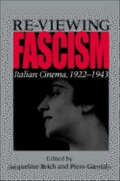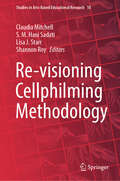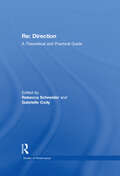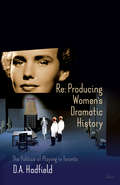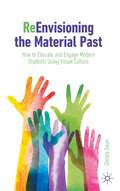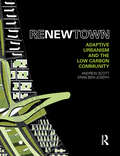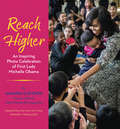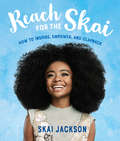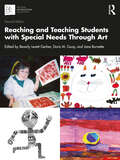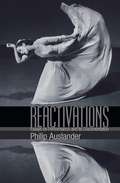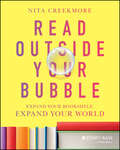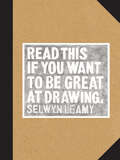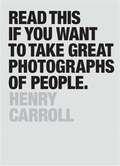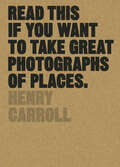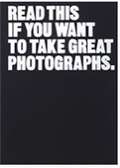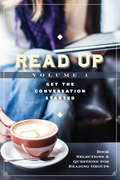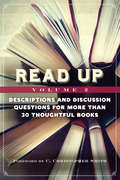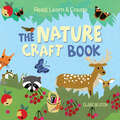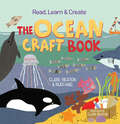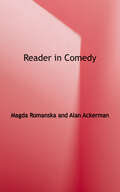- Table View
- List View
Re-viewing Fascism: Italian Cinema, 1922–1943
by Jacqueline Reich and Piero GarofaloWhen Benito Mussolini proclaimed that "Cinema is the strongest weapon," he was telling only half the story. In reality, very few feature films during the Fascist period can be labeled as propaganda. Re-viewing Fascism considers the many films that failed as "weapons" in creating cultural consensus and instead came to reflect the complexities and contradictions of Fascist culture. The volume also examines the connection between cinema of the Fascist period and neorealism—ties that many scholars previously had denied in an attempt to view Fascism as an unfortunate deviation in Italian history. The postwar directors Luchino Visconti, Roberto Rossellini, and Vittorio de Sica all had important roots in the Fascist era, as did the Venice Film Festival. While government censorship loomed over Italian filmmaking, it did not prevent frank depictions of sexuality and representations of men and women that challenged official gender policies. Re-viewing Fascism brings together scholars from different cultural and disciplinary backgrounds as it offers an engaging and innovative look into Italian cinema, Fascist culture, and society.
Re-visioning Cellphilming Methodology (Studies in Arts-Based Educational Research #10)
by Claudia Mitchell S. M. Hani Sadati Lisa J. Starr Shannon RoyThis book focuses on cellphilming as a participatory visual methodology in arts-based research and teaching. The book aims to advance critical perspectives—and re-visioning—in relation to the co-production of knowledge through cellphilming. Many of the chapters come out of an international virtual symposium hosted by McGill University in June 2022. It brings together authors working in a variety of interdisciplinary areas and settings including work with Indigenous groups in Canada, girls and women with disabilities in Vietnam, youth in conflict and refugee contexts in Mali, and Sexual and Reproductive Health Rights in Canada, Nigeria, South Africa, and India. Some of the re-visioning addressed in the collection takes up place as we work in new contexts and situations as we are seeing with the idea of ethnographies at a and in relation to COVID-19. The genres, the place of reflexivity, and even the timing of participatory engagement might vary as a result of using virtual platforms necessitated by distancing. Other re-visioning takes place as a result of work with new communities, or new age populations and aspects of intersectionality, looking across work with very young children and older adults. This book contributes to further decolonizing cellphilming methodology to support participatory work in new ways, and with underrepresented groups for whom finding new ways for engagement is key. A special feature of the book is its attention to work with International NGOs. Chapter ‘Cellphones beyond the workshop: Youth researchers owning gender transformative change through participatory visual research in rural India during COVID-19’ is available open access under a Creative Commons Attribution 4.0 International License via link.springer.com.
Re: A Theoretical and Practical Guide (Worlds of Performance)
by Gabrielle Cody Rebecca SchneiderRe: Direction is an extraordinary resource for practitioners and students on directing. It provides a collection of ground-breaking interviews, primary sources and essays on 20th century directing theories and practices around the world. Helpfully organized into four key areas of the subject, the book explores: * theories of directing * the boundaries of the director's role * the limits of categorization * the history of the theatre and performance art. Exceptionally useful and thought-provoking introductory essays by editors Schneider and Cody guide you through the wealth of materials included here. Re: Direction is the kind of book anyone interested in theatre history should own, and which will prove an indispensable toolkit for a lifetime of study.
Re: Producing Women's Dramatic History
by D. A. HadfieldWithin the last generation, Canadian drama, like other literary forms, has seen the emergence of works by women that re-vision the role of women in history. However, in order to write themselves into theatre history, women have had to negotiate a complex journey through both pages and stages, a network of public production that is highly politically charged at every turn. This book examines the strategies employed by seven feminist productions that have managed to achieve a canonic place in the recorded history of Canadian theatre. All of the plays under consideration here exist (or have existed) in at least one published script form. However, Dorothy Hadfield’s purpose here is not to analyze these scripts for the definitive meaning of the narratives in these plays, nor is she trying to suggest how a reader or audience should inevitably read them. Instead, Hadfield is trying to account for how and why these scripts came to exist in published form, given the strong implicit connection between publication and a public assumption of "good” or "successful” theatre. In a system where textual visibility leads to opportunities for study, reproduction and validation for both play and playwright, the permanence of script publication can have real economic and ideological advantages. By analyzing publicity materials, photos, programs, reviews, box office and theatre records, it is possible to trace the process of creating a theatrical "success,” as well as to assess what effect that critical verdict has on the shape of the script publications of these works. In effect, by placing the textual artifacts left behind by these performances in the context of their production and reception, in part through a carefully constructed ideological compatibility throughout the production process, it is possible to investigate how the politics of the theatrical process influences what we perceive as "good” playwriting.
ReEnvisioning the Material Past: How to Educate and Engage Modern Students Using Visual Culture
by Glenda SwanThis book is designed to help instructors effectively incorporate images and other aspects of material culture into their pedagogy in an engaging and relatable manner. The author draws on her personal experiences as an art historian of ancient art who instructs a wide variety of undergraduates. In addition to helping students to look and think critically, the book explores how the material culture of the past can be a potent tool in motivating student involvement with course content and sharpening skills vital for navigating contemporary culture.
ReNew Town: Adaptive Urbanism and the Low Carbon Community (Routledge Contemporary Asia Ser.)
by Eran Ben-Joseph Andrew ScottReNew Town puts forth an innovative vision of performative design and planning for low-carbon sustainable development, and illustrates practicable strategies for balancing environmental systems with urban infrastructure and new housing prototypes. To date, much of the discourse on the design of sustainable communities and ‘eco-cities’ has been premised on using previously undeveloped land. In contrast, this book and the project it showcases focus on the retrofitting and adaptation of an existing environment – a more common problem, given the extent of the world’s already-built infrastructure. Employing a ‘research through design’ model of inquiry, the book focuses on large-scale housing developments – especially those built around the world between the 1960s and the early 1980s – with the aim of understanding how best to reinvent them. At the center of the book is Tama New Town, a planned community outside Tokyo that faces a range of challenges, such as an aging population, the deterioration of homes and buildings, and economic stagnation. The book begins by outlining a series of principles that structure the ecological and energy goals for the community. It then develops prototypical solutions for designing, building and retrofitting neighborhoods. The intent is that these prototypes could be applied to similar urban conditions around the world. ReNew Town is the product of a collaborative design research project at the Massachusetts Institute of Technology (MIT) School of Architecture and Planning, and Japan’s Sekisui House LTD.
Reach Higher: An Inspiring Photo Celebration of First Lady Michelle Obama
by Amanda LucidonA collection of striking and intimate photographs of Michelle Obama, coupled with personal reflections and behind-the-scenes stories from official White House photographer and New York Times bestselling author of Chasing Light, Amanda Lucidon, presented in a deluxe format for young readers.This stunning and revealing collection of seventy photographs captures and celebrates Mrs. Obama's White House years and her dedication to improving the lives of young people in the United States and around the world.As a former official White House photographer, Amanda Lucidon shares an insider's view on the role of the First Lady by documenting life at the White House and sharing personal memories that reveal what makes Mrs. Obama so special.Newly adapted in a deluxe format for young readers from the New York Times bestseller Chasing Light, the collection also includes: * The role of the First Lady, past and present * What a White House photographer does * The history of the People's House and the people who lived there * And much more!These strikingly intimate and candid photographs through the lens of a White House photographer are a beautiful celebration and powerful reminder of the impact of a remarkable First Lady.Praise for adult edition, Chasing Light: Michelle Obama Through the Lens of a White House Photographer:"Michelle Obama, with dignity, grace, and respect, has taught and inspired all of us to chase what is good, right, and just." --Congressman John Lewis"This awesome collection of images reminds us of how powerful the role of First Lady has evolved to become. . . . It is a joyous collection." --Meryl Streep
Reach for the Skai: How to Inspire, Empower, and Clapback
by Skai JacksonActress and activist Skai Jackson shares her lessons on life and her rise to stardom in this vibrant memoir about self-acceptance, girl empowerment, and the classy clapback.Actress and activist Skai Jackson is a star! Her rise to fame started on the popular Disney Channel shows Bunk'd and Jessie. Her cool sense of style led her to create her own fashion line. And her success has made her a major influencer, with millions of followers on Instagram, who isn't afraid to stand up for what she believes in.But being a teen celebrity isn't always glamorous. For the first time, Skai discusses the negative experiences that sometimes come with living in the spotlight--the insecurities about her appearance, the challenges of separating her real personality from her TV roles, and the bullying she's faced both personally and professionally. She knows firsthand the struggles tweens and teens face today, and she has found her calling as an antibullying activist, known as the queen of the classy clapback.Skai is a positive force and a role model for inspiring change and embracing differences in others. Her story will encourage girls and boys alike to believe in themselves and to have the courage to reach for the sky and follow their dreams.
Reaching and Teaching Students with Special Needs Through Art
by Beverly Levett Gerber Doris M. Guay Jane BurnetteThis second edition of Reaching and Teaching Students with Special Needs Through Art is written for art educators, special educators, and those who value the arts for students with special needs. It builds on teachers’ positive responses to the first edition, and now combines over 700 years of the educational experience of arts and special educators who share their art lessons, behavior management strategies, and classroom stories. The revised second edition provides updated chapters addressing students with emotional/behavioral disabilities, learning disabilities, intellectual disabilities, physical disabilities, and visual and hearing impairments.The newly revised second edition includes chapters on students with autism spectrum disorder, preschool students, and students experiencing trauma. All chapters have been updated to include current definitions and language, recommended teaching strategies, art lesson adaptations, behavior management strategies, and references to related chapters. Follow-up activities are provided for further insights into each group of students. A new summary chapter connects how the authors’ collaborations resulted in changes to two professional organizations. Since the first edition, many of the featured authors established the new Division of Visual and Performing Arts Education (DARTS) at the Council for Exceptional Children (CEC) and earlier, formed a new National Art Education Association (NAEA) Interest group—Special Needs in Art Education (SNAE), now Arts in Special Education (ASE).This edition is ideal for preservice arts methods courses and education courses on accessibility and inclusion at the undergraduate and graduate levels. It continues to offer current yet proven best practices for reaching and teaching this ever-important population of students through the arts.
Reactivations: Essays on Performance and Its Documentation
by Philip AuslanderMost people agree that witnessing a live performance is not the same as seeing it on screen; however, most of the performances we experience are in recorded forms. Some aver that the recorded form of a performance necessarily distorts it or betrays it, focusing on the relationship between the original event and its recorded versions. By contrast, Reactivations focuses on how the audience experiences the performance, as opposed to its documentation. How does a spectator access and experience a performance from its documentation? What is the value of performance documentation? The book treats performance documentation as a specific discursive use of media that arose in the middle of the 20th century alongside such forms of performance as the Happening and that is different, both discursively and as a practice, from traditional theater and dance photography. Philip Auslander explores the phenomenal relationship between the spectator who experiences the performance from the document and the document itself. The document is not merely a secondary iteration of the original event but a vehicle that gives us meaningful access to the performance itself as an artistic work.
Read Outside Your Bubble: Expand Your Bookshelf, Expand Your World
by Nita CreekmoreLearn how to foster student engagement, cultivate empathy, and encourage a love of reading by bringing diverse literature into the classroom Using an instructional coaching framework, Read Outside Your Bubble introduces teachers to a new mindset for helping students develop literacy and become lifelong readers. By building an accessible and inclusive literacy curriculum, you can pique students' interest in the world outside their #bubbles. “Bubbles” are identity markers of race, religion, orientation, and socio-economic status. In this book, instructional coach and parent Nita Creekmore takes a conversational and research-backed approach to introducing her L.E.A.P framework, which guides you through the process of crafting your curriculum. You'll also learn how to develop lesson plans that increase compassion, cultivate empathy, and encourage a love of reading and history. Follow the research-backed L.E.A.P. framework to choose diverse reading selections for K-12 classrooms Learn step-by-step techniques for creating an inclusive curriculum that engages students in literacy Help turn students into lifelong learners by encouraging them to think beyond their own circumstances and think critically about the world around them Teach students how to compare and contrast themes and ideas across content areas The primary audience is teachers, curriculum coaches, curriculum specialists, instructional coaches, and homeschooling parents will appreciate the practical, future-minded approach in Read Outside Your Bubble. This book brings diversity into classrooms in a way that will prepare students to participate in the creation of a more inclusive world.
Read This if You Want to Be Great at Drawing (Read This)
by Selwyn LeamyThis book demystifies the art and practice of drawing. Through fifty drawings by great masters past and present, the techniques and ideas behind their master sketches will put you on the path to making your own great drawings. The entries also feature exercises with step-by-step instructions as well as simple diagrams providing further visual explanation to the jargon-free discussion. For aspiring artists of all ages and abilities, Read This if You Want to Be Great at Drawing will motivate and strengthen your drawing talent.
Read This if You Want to Be Great at Drawing: (the Drawing Book For Aspiring Artists Of All Ages And Abilities) (Read This Ser.)
by Selwyn LeamyThis book demystifies the art and practice of drawing. Through fifty drawings by great masters past and present, the techniques and ideas behind their master sketches will put you on the path to making your own great drawings. The entries also feature exercises with step-by-step instructions as well as simple diagrams providing further visual explanation to the jargon-free discussion. For aspiring artists of all ages and abilities, Read This if You Want to Be Great at Drawing will motivate and strengthen your drawing talent.
Read This if You Want to Take Great Photographs of People (Read This)
by Henry CarrollNo clichés. No cheese. No camera-club jargon. This straight talking introduction to photographing people is the hotly anticipated follow up to the bestselling Read This if You Want to Take Great Photographs. Ideal for users of any camera with a basic knowledge of a few photo-fundamentals, this book walks you through the essential techniques of photographing people, whether it’s on the street, at home or in the studio. Packed with iconic images by acclaimed photographers, you’ll have the inspiration and knowhow needed to get out there and take great photographs of friends, family and everyone else.50 master photographers including:Richard Avedon, William Klein, Cindy Sherman, Garry Winogrand, Richard Renaldi, William Eggleston, Sebastião Salgado, Henri Cartier-Bresson, August Sander, and Joel Sternfeld
Read This if You Want to Take Great Photographs of People (Read This)
by Henry CarrollNo clichés. No cheese. No camera-club jargon. This straight talking introduction to photographing people is the hotly anticipated follow up to the bestselling Read This if You Want to Take Great Photographs. Ideal for users of any camera with a basic knowledge of a few photo-fundamentals, this book walks you through the essential techniques of photographing people, whether it’s on the street, at home or in the studio. Packed with iconic images by acclaimed photographers, you’ll have the inspiration and knowhow needed to get out there and take great photographs of friends, family and everyone else.50 master photographers including:Richard Avedon, William Klein, Cindy Sherman, Garry Winogrand, Richard Renaldi, William Eggleston, Sebastião Salgado, Henri Cartier-Bresson, August Sander, and Joel Sternfeld
Read This if You Want to Take Great Photographs of Places (Read This Ser.)
by Henry CarrollFrom the author of the bestselling Read This If You Want To Take Great Photographs series, this jargon-free introduction covers all aspects of photographing places, including landscapes, cityscapes, architecture, and interiors. Whatever your camera, whatever your interest, whatever your level, this indispensible guide gives you all the essential techniques and demystifies the work of acclaimed photographers. Packed with practical tips and iconic images, this accessible book will arm you with the know-how you need to take meaningful pictures of the places that matter to you most. Featuring 50 master photographers, including Alec Soth, Martin Parr, Robert Adams, Todd Hido, Rut Blees Luxemburg, Julius Shulman, Rinko Kawauchi, Thomas Ruff, Tim Hetherington, and Joel Sternfeld.
Read This if You Want to Take Great Photographs of Places (Read This)
by Henry CarrollFrom the author of the bestselling Read This If You Want To Take Great Photographs series, this jargon-free introduction covers all aspects of photographing places, including landscapes, cityscapes, architecture, and interiors. Whatever your camera, whatever your interest, whatever your level, this indispensible guide gives you all the essential techniques and demystifies the work of acclaimed photographers. Packed with practical tips and iconic images, this accessible book will arm you with the know-how you need to take meaningful pictures of the places that matter to you most. Featuring 50 master photographers, including Alec Soth, Martin Parr, Robert Adams, Todd Hido, Rut Blees Luxemburg, Julius Shulman, Rinko Kawauchi, Thomas Ruff, Tim Hetherington, and Joel Sternfeld.
Read This if You Want to Take Great Photographs: A Photo Journal (Read This)
by Henry CarrollPhotography is now more popular than ever thanks to the rapid development of digital cameras. Read This If You Want to Take Great Photographs is ideal for this new wave of snapshooters using DSLR, compact system and bridge cameras. It contains no graphs, no techie diagrams and no camera-club jargon. Instead, it inspires readers through iconic images and playful copy, packed with hands-on tips. Split into five sections, the book covers composition, exposure, light, lenses and the art of seeing. Masterpieces by acclaimed photographers – including Henri Cartier-Bresson, Sebastião Salgado, Fay Godwin, Nadav Kander, Daido Moriyama and Martin Parr – serve to illustrate points and encourage readers to try out new ideas. Today’s aspiring photographers want immediacy and see photography as an affordable way of expressing themselves quickly and creatively. This handbook meets their needs, teaching them how to take photographs using professional techniques.
Read This if You Want to Take Great Photographs: A Photo Journal (Read This)
by Henry CarrollPhotography is now more popular than ever thanks to the rapid development of digital cameras. Read This If You Want to Take Great Photographs is ideal for this new wave of snapshooters using DSLR, compact system and bridge cameras. It contains no graphs, no techie diagrams and no camera-club jargon. Instead, it inspires readers through iconic images and playful copy, packed with hands-on tips. Split into five sections, the book covers composition, exposure, light, lenses and the art of seeing. Masterpieces by acclaimed photographers – including Henri Cartier-Bresson, Sebastião Salgado, Fay Godwin, Nadav Kander, Daido Moriyama and Martin Parr – serve to illustrate points and encourage readers to try out new ideas. Today’s aspiring photographers want immediacy and see photography as an affordable way of expressing themselves quickly and creatively. This handbook meets their needs, teaching them how to take photographs using professional techniques.
Read Up: Book Selections & Questions for Reading Groups
by Lorraine CaultonRead UpRead Updescriptions, discussion questions, author conversations or excerpts for more than 30 thoughtful books.Read UpRead Up
Read Up: Descriptions & Discussion Questions for More Than 30 Thoughtful Books
by C. Christopher Smith Lorraine CaultonRead Up, Volume 2.Read Up, Volume 2descriptions, discussion questions, author conversations or excerpts for more than 30 thoughtful books.Read UpRead Up
Read, Learn & Create--The Nature Craft Book
by Clare BeatonPerfect for your young explorers and your elementary artists. Make a craft inspired by nature--and learn something, too!What can you create with some backyard objects and tissue paper? Your very own flower crown! Use easy-to-follow directions to make fifteen crafts (and two recipes!) with each one focused on nature. Crafts include fun facts and additional resources, giving covert learning opportunities for your little explorer and reducing screentime.
Read, Learn & Create--The Ocean Craft Book
by Clare Beaton Rudi HaigPerfect for your preK explorers and your elementary artists. Make a craft inspired by ocean--and learn something, too!What can you create with just a cardboard box and some construction paper? Your very own coral reef! Use easy-to-follow directions to make thirteen crafts (and one recipe), each one focused on the ocean. Crafts include fun facts and additional resources, giving covert learning opportunities for your little explorer and reducing screentime.
Reader in Comedy: An Anthology of Theory and Criticism
by Alan Ackerman Magda RomanskaThis unique anthology presents a selection of over seventy of the most important historical essays on comedy, ranging from antiquity to the present, divided into historical periods and arranged chronologically. Across its span it traces the development of comic theory, highlighting the relationships between comedy, politics, economics, philosophy, religion, and other arts and genres. Students of literature and theatre will find this collection an invaluable and accessible guide to writing from Plato and Aristotle through to the twenty-first century, in which special attention has been paid to writings since the start of the twentieth century. The book is arranged in five sections, each featuring an introduction providing concise and informed historical and theoretical frameworks for the texts from the period: - Antiquity and the Middle Ages - The Renaissance - Restoration to Romanticism - The Industrial Age - The Twentieth and Early Twenty-First Centuries Among the many authors included are: Plato, Aristotle, Horace, Donatus, Dante Alighieri, Erasmus, Trissino, Sir Thomas Elyot, Thomas Wilson, Sir Philip Sidney, Ben Jonson, Battista Guarini, Molière, William Congreve, John Dryden, Henry Fielding, Samuel Johnson, Oliver Goldsmith, Jean Paul Richter, William Hazlitt, Charles Lamb, Søren Kierkegaard, Charles Baudelaire, Bernard Shaw, Mark Twain, Henri Bergson, Constance Rourke, Northrop Frye, Jacques Derrida, Mikhail Bakhtin, Georges Bataille, Simon Critchley and Michael North. As the selection demonstrates, from Plato and Aristotle to Henri Bergson and Sigmund Freud, comedy has attracted the attention of serious thinkers. Bringing together diverse theories of comedy from across the ages, the Reader reveals that, far from being peripheral, comedy speaks to the most pragmatic aspects of human life.
Reader's Digest Complete Guide to Sewing: Step By Step Techniques For Making Clothes And Home Accessories
by Reader'S DigestAn indispensable volume for beginning and advanced sewers alike that guides readers through necessary equipment, techniques, fabrics and more.First published in 1978, Reader&’s Digest&’s popular Complete Guide to Sewing has become the standard stich-and-seam reference book for both beginner and seasoned sewers. Now, Reader&’s Digest has refreshed this tried-and-true volume for the modern era, adapting it to current trends while preserving the comprehensive, practical and inspiring content within. Reader&’s Digest Complete Guide to Sewing gives sewers of every experience and comfort level everything they need to know to create the wardrobe of their dreams and beautify their homes with original decorative accents. Clear, simple instructions written by experts in the field tell you what to do and how to do it. Plus, thousands of illustrations and diagrams throughout the book&’s 384 pages illustrate each stage of the process. Key elements of the book include: A detailed list of the basic equipment you&’ll need before getting started sewing. Tips for choosing the right fabric for your project. A step-by-step photo guide that shows you how to take measurements. Instructions in a variety of essential hand-stitching techniques. 20 timeless projects— more than half of them new to this edition—to practice your skills including shirts, dresses, bags, and more. Plus, the book has received endorsements from a variety of trusted sources: &“…and I always recommend the Reader&’s Digest Guide to Sewing. It&’s very comprehensive and very user-friendly.&” —Tim Gunn &“…abundant and precise line art, enticing photographs, simple-to-follow instructions and valuable information on tools, supplies, materials and techniques.&” —The New York Times &“A woman who takes sewing seriously, or who wants to learn to sew, won&’t want to be without this book.&” —Portland Oregon Journal &“Here is everything you always wanted to know about sewing—a veritable encyclopedia of stitching facts.&” —The Austin American Statesman
